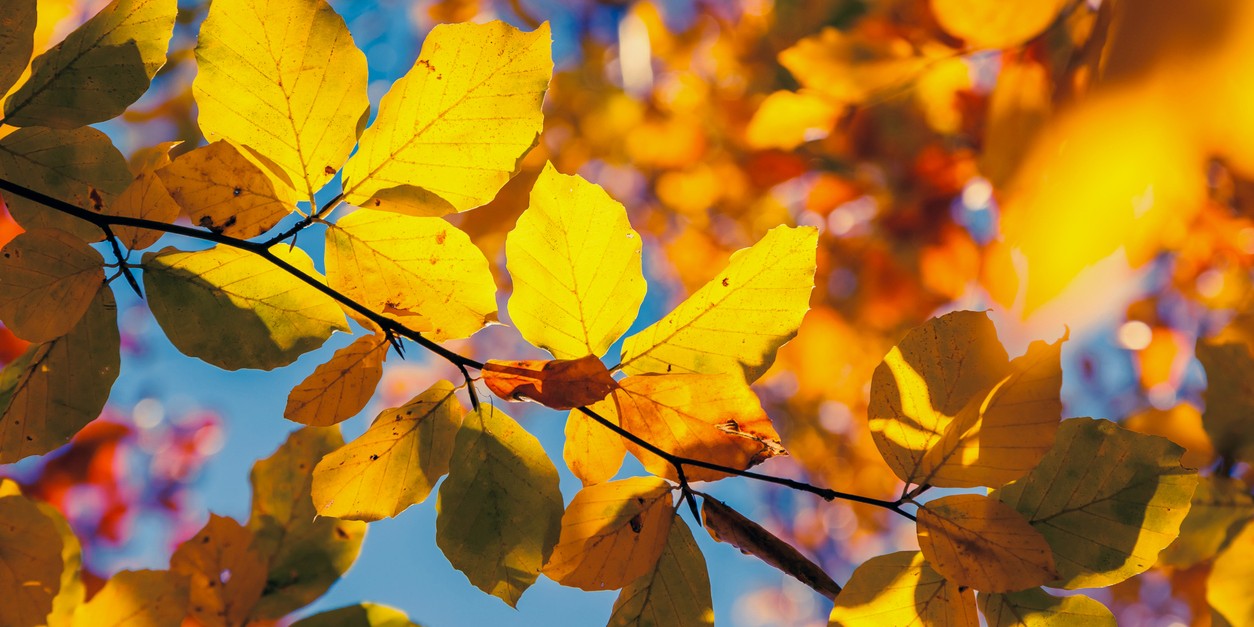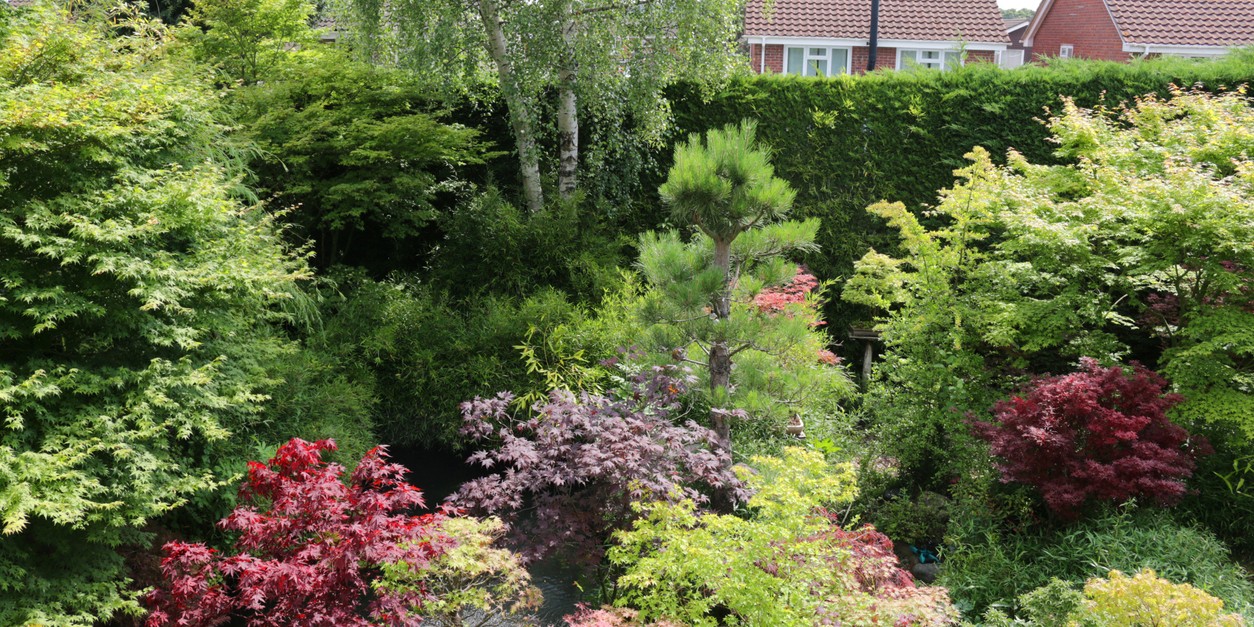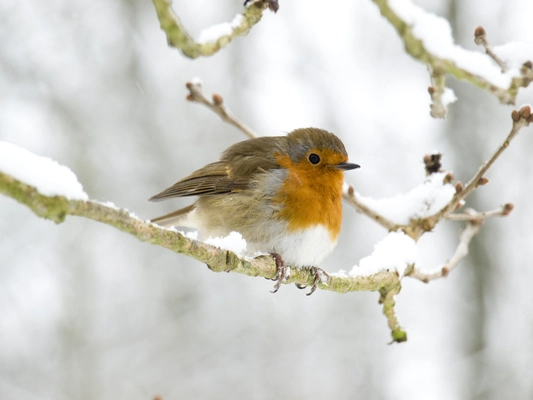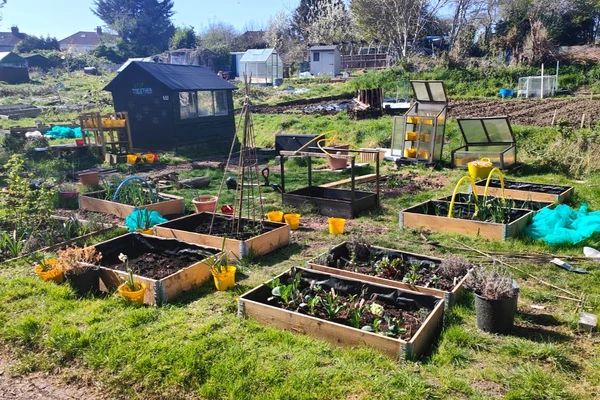November Notes from the Potting Shed
with Gardening Expert Chris Milborne
Months and seasons seem to pass at a great pace.
November brings plenty to achieve in the garden - planting, planning, and preparation. Although the days are becoming visibly shorter, damper, and cooler, we have enjoyed some magnificent days with only a stormy interlude. Temperatures were above average in October during a period of still weather, and autumnal colours were glorious under the grey, leaden clouds. The peak of these brilliant displays comes in early November but is over all too soon, as winds and rain bring down the last colourful leaves of autumn.

When leaves cover beds and borders, I leave them to break down naturally - some of the healthiest soils in the UK are found in deciduous woodlands. However, I do clear fallen leaves from lawns, Alpine plants, and anywhere soggy leaves could cause rot.
As summer herbaceous perennials start to fade and die back, I leave seed heads to provide winter feed for the birds. I also prefer not to cut back old stems unless they need support, as they, together with fallen leaves, provide insulation and protect next year’s new growth lying just below the surface from the coldest weather. I prefer a spring clean rather than an autumn tidy. In any spare spaces, I plant spring-flowering bulbs.
On the allotment, the rows of dahlias have been glorious, and I’ve harvested an abundance of vegetables and apples - a bumper crop this year, all now stored for winter use. The soil has been readily workable for digging over, ready for next year, and for planting more soft fruit, which have done excellently this season. I’ve also sown some green manure and overwintering broad beans. The one downside has been an infestation of whitefly on brassicas, which have multiplied in the warm conditions, also appearing on photinias. Mildew - a grey covering on leaves, has shown up on some herbaceous plants.
Now is the time for winter-coloured stems, interesting barks, and evergreen plants to come into their own, giving structure and backbone to the garden. Many have attractive leaf shapes, often variegated, and when planting evergreens, try to achieve contrast - place dark green leaves next to variegated or yellow-leaved plants to make the green stand out. If you put two variegated plants together, you lose that contrast. Many of these plants for winter interest also have attractive and often highly scented flowers - such as Elaeagnus, Skimmia, and Sarcococca.

Consider planting a hedge - it’s more natural than fencing, provides privacy, acts as a windbreak, and can screen parts of the garden. Hedges can be formal or informal, with plants chosen for different heights or a mix of evergreen and deciduous species, including roses and Philadelphus for scented flowers.
Continue planting trees, shrubs, roses, and climbers.
At the moment, I’m pruning roses - cutting them back by a third helps prevent wind rock from destabilising the plants and loosening the roots. I’ve also started pruning apple and pear trees and applying glue bands to their trunks to prevent wingless winter moths from climbing the stems and laying eggs in bark crevices.
I cut back Buddleias and Lavateras by half to help prevent wind damage.
I’m also planting tulips - large, showy flowers available in a wide range of colours. By choosing early, mid-season, and late varieties, you can extend the flowering period from March to May. They look superb planted with forget-me-nots, pansies, violas, wallflowers, primroses, and polyanthus. For impact in pots, plant two layers.

Dahlias, a favourite plant of mine, provide a fantastic show of colour all summer. I prefer to lift and store the tubers, as in my soil, the cold and wet can cause them to rot if left in the ground. I cut back the stems, carefully lift the tubers, and leave them to dry for a couple of hours. Then I clean them and store them with the hollow stems facing downwards in boxes, surrounded with straw, dry leaves, or sand. Last year, I potted up some tubers and kept them frost-free in the shed, producing excellent, strong plants when started into growth.
I prepare the garden for winter and check for anything likely to be affected by the cold or by waterlogging - pots on feet, etc.
If the weather is cold and wet outside, I turn my attention indoors to a bit of houseplant maintenance - cleaning, tidying, and so on. The Cymbidium orchid is coming back into flower after spending the summer outside under an apple tree.
Houseplants are an amazing group, with a wide range of leaf shapes, sizes, and colours. Some produce stunning flowers, such as orchids and bromeliads, and many improve air quality. There’s a suitable plant for every room, with different light and humidity requirements.
At this time, I also replant my terrarium, which has become overgrown - gardening in miniature, brilliant when the weather isn’t so good outside.
Until next month - whether pruning, planting, planning for next year, or looking after houseplants while sheltering from the weather - enjoy!






